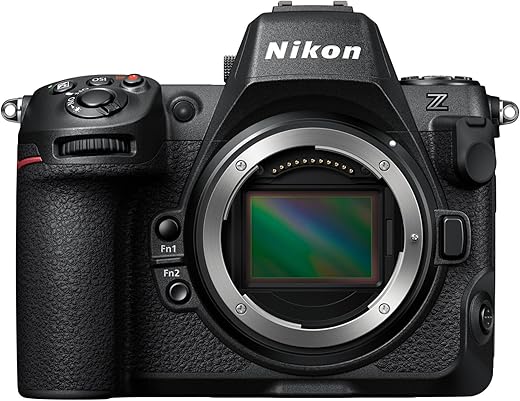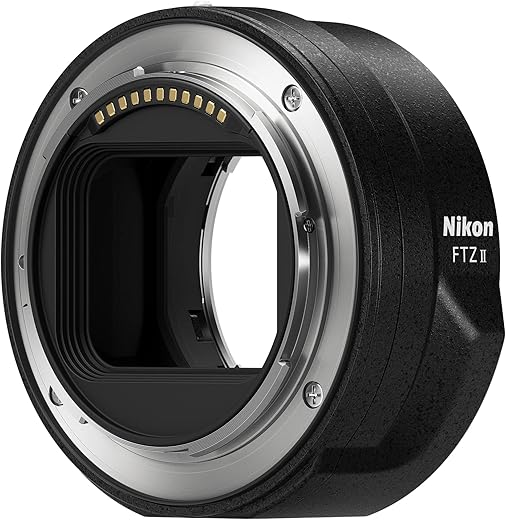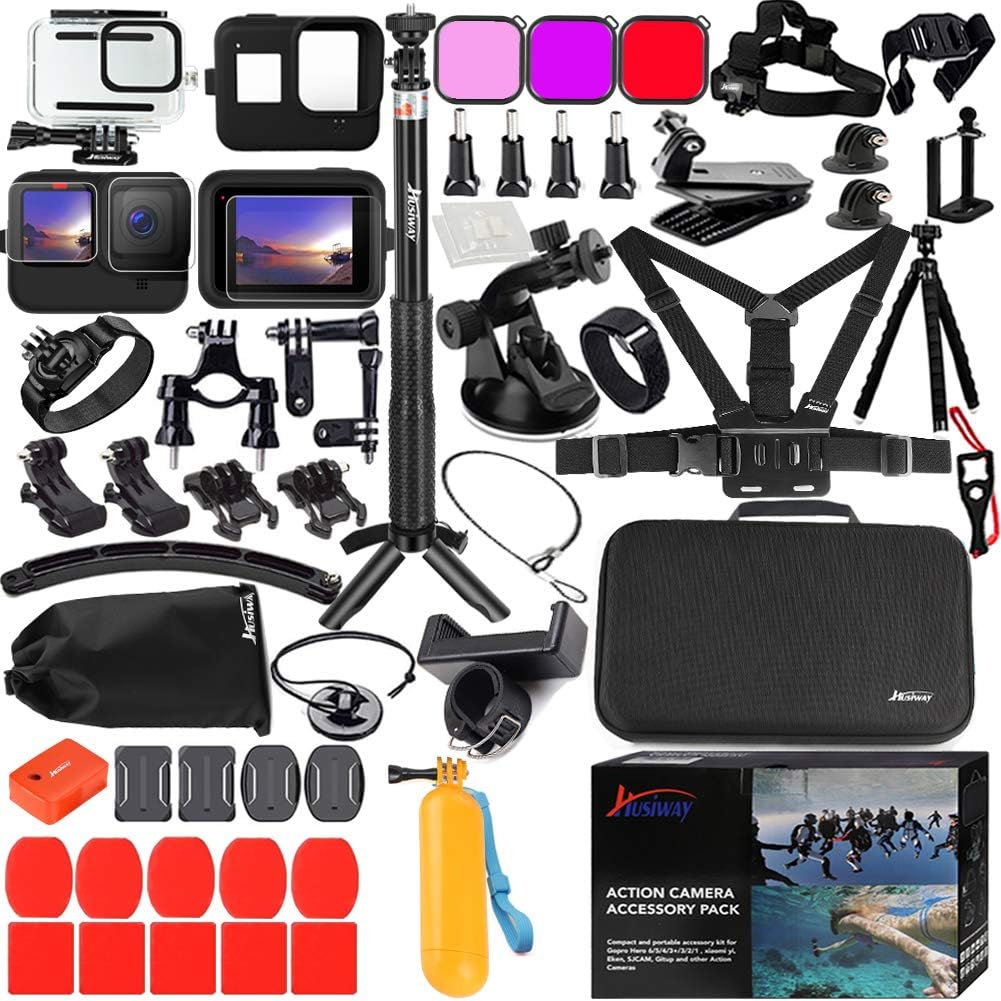As a photography enthusiast, I understand the importance of having the right accessories to enhance both the functionality and versatility of my gear. In this post, I’ll share my top five Nikon Z accessories that I believe every photographer should consider. These tools not only complement the Nikon Z series cameras but also help elevate the overall photography experience, whether you’re shooting landscapes, portraits, or anything in between. Let’s explore how these accessories can support your creative vision.
Nikon Z 8 Hybrid Camera
The Nikon Z 8 stands out as a highly advanced hybrid camera, expertly designed for both still photography and video production. With its 45.7MP stacked CMOS sensor and remarkable 12-bit 8K video capabilities, I can achieve unparalleled image quality and cinematic detail. The fast, accurate autofocus system powered by deep learning ensures that I can confidently capture subjects in motion, whether they’re people, animals, or vehicles, all while enjoying the benefits of a lightweight and ergonomic build.
In my experience, the Z 8 proves to be a game-changer with its remarkable versatility and performance. The camera’s internal RAW video recording and various shooting modes cater to my creative needs, whether I’m focused on portraiture or fast-paced action photography. With seamless connectivity and smart operational features, I can easily navigate and customize my shooting experience, making it an essential tool in my photography toolkit.
Nikon Z f Full-Frame Mirrorless Camera
The Nikon Z f is an exceptional full-frame mirrorless camera that seamlessly combines classic design with cutting-edge technology. Boasting a 24.5MP BSI full-frame sensor and EXPEED 7 processing power, it delivers striking image quality with impressive depth and dynamic range, even in challenging low-light conditions. The camera’s iconic styling, reminiscent of 80s DSLRs, offers an authentic tactile experience, enhanced by intuitive controls like a dedicated ISO dial and exposure compensation, making it a joy to use for both seasoned photographers and newcomers alike.
Equipped with advanced autofocus capabilities driven by Deep Learning technology, the Z f excels in subject recognition and tracking, even in motion. With features like 4K video recording, Pixel Shift shooting for ultra-high resolution stills, and built-in image stabilization, I appreciate the versatility this camera provides for both still photography and videography. The intuitive 3.2-inch vari-angle touchscreen further enhances usability, allowing me to focus quickly and efficiently while adapting to any shooting angle. Overall, the Nikon Z f stands out as a robust and reliable tool for creatives looking to elevate their craft.
Nikon Z 6II Full-Frame Hybrid Camera
I am impressed with the Nikon Z 6II, a versatile full-frame mirrorless camera that truly excels in both photography and videography. With its remarkable 24.5MP resolution and 4K Ultra HD capabilities at 60p, this camera delivers outstanding image quality even in low-light settings. Its 14 frames per second continuous shooting speed, along with an advanced 273-point Hybrid autofocus system, makes it perfectly suited for capturing fast-paced action moments.
Designed for ease of use, the Z 6II features a robust and comfortable build, complete with intuitive controls and dual card slots for added reliability. My experience with this camera has been nothing short of excellent, especially when paired with high-quality NIKKOR Z lenses. The USB-C charging option and wireless connectivity further enhance its functionality, making it an essential tool for both professional and aspiring photographers alike.
Nikon AF-S DX 35mm f/1.8G Lens
The Nikon AF-S DX NIKKOR 35mm f/1.8G Lens is a remarkable addition to my photography toolkit. With its fast f/1.8 aperture, this lens excels in low-light conditions, allowing me to capture stunning images with beautiful bokeh. It delivers high-quality images that rival much more expensive lenses and has quickly become my go-to choice for portraits, landscapes, and everyday snapshots, thanks to its compact and lightweight design.
One of the standout features of this lens is its versatility. The 35mm focal length—equivalent to 50mm on DX-format cameras—offers a natural perspective that mimics how our eyes see the world. I appreciate the quiet and swift autofocus thanks to the Silent Wave Motor, which makes it ideal for both candid moments and intentional compositions. Overall, the AF-S DX NIKKOR 35mm f/1.8G lens is not only an affordable option but also a vital tool that enhances my creativity and skills as a photographer.
Nikon 18-300mm Vibration Reduction Zoom Lens
As a passionate photographer, I truly appreciate the versatility that the Nikon AF-S DX NIKKOR 18-300mm f/3.5-6.3G ED Vibration Reduction Zoom Lens brings to my camera. With its impressive 16.7x zoom range, I can seamlessly transition from capturing expansive landscapes at 18mm to stunning wildlife close-ups at 300mm, all without having to change lenses. The incorporation of advanced Vibration Reduction technology ensures that my shots remain crisp and stable, even in challenging conditions or when my hands are less than steady.
What stands out to me is the lens’s compact and lightweight design, making it an exceptional all-rounder for my photography needs. It allows me to shoot both still images and HD videos without the added bulk of carrying multiple lenses. Whether I’m photographing my children in candid moments or embarking on a hiking adventure to capture nature, this lens delivers remarkable performance and vibrant image quality. For anyone seeking an efficient and reliable zoom lens for their Nikon DSLR, I wholeheartedly recommend the AF-S DX NIKKOR 18-300mm.
Explore Comparable Options
Top Choices in Photography Gear
Getting Started: Essential Tips for Mastering Your Nikon Z Camera
- Familiarize Yourself with the Camera Controls: Before starting to take photos, I recommend spending some time understanding the layout of the Nikon Z’s buttons and dials. Reading the manual and practicing with key functions such as the mode dial, exposure compensation, and focus modes will help me navigate the camera more comfortably
- Start with Auto Mode: As a beginner, I find it beneficial to start using the camera in Auto Mode. This setting allows the camera to handle exposure and focus settings, enabling me to concentrate on composing my shots without getting overwhelmed by technical details
- Experiment with Different Shooting Modes: Once I feel comfortable in Auto Mode, I can start exploring other shooting modes, such as Aperture Priority and Shutter Priority. This will help me understand how changing settings like aperture and shutter speed affects my images, ultimately enhancing my photography skills
Your Questions Answered: Nikon Z Series Insights
When shooting in low light with a Nikon Z camera, I recommend the following settings to achieve optimal results:
- Aperture: Use a wide aperture (low f-number, such as f/1.8 or f/2.8) to allow more light to hit the sensor. This will help to create brighter images and also provide a shallow depth of field if that’s desired.
- ISO: Increase the ISO setting to enhance sensitivity to light. I suggest starting with an ISO of around 1600 and adjusting it higher as needed, keeping in mind that higher ISO settings can introduce noise. The Nikon Z series handles high ISO well, so you can often push beyond 3200 without significant loss in quality.
- Shutter Speed: Use a slower shutter speed to allow more light to come in, but be careful to avoid motion blur. A general rule is to keep your shutter speed above the reciprocal of your focal length (e.g., for a 50mm lens, your shutter speed should be at least 1/50 seconds). If the subject is stationary, you can experiment with slower speeds.
- Stabilization: Utilize in-body image stabilization (IBIS) if available on your Nikon Z model. This helps to compensate for small movements during handheld shooting in low light.
- Focus Mode: Switch to Single-point autofocus to help ensure precise focusing in low light conditions, as cameras often struggle with auto-focus in dim environments.
- White Balance: Set your white balance manually according to the light source, or use auto white balance and adjust it during post-processing if needed.
- Shoot in RAW: I recommend shooting in RAW format to give yourself more flexibility in post-processing, especially when adjusting exposure and correcting noise without losing image quality.
These settings provide a solid foundation for low light photography with a Nikon Z camera, but always feel free to adjust based on the specific scene and your personal style.
The Nikon Z series cameras are known for several key features that enhance their performance and usability for both amateur and professional photographers.
- Full-Frame Sensor: Most Z series cameras are equipped with full-frame (FX-format) sensors, which provide excellent image quality, improved low-light performance, and greater depth of field control.
- Z Mount: The Z mount has a larger diameter and shorter flange distance than previous Nikon mounts, allowing for a broader range of lenses and improved optical performance. This design enhances sharpness and reduces distortion and vignetting.
- In-Body Image Stabilization (IBIS): Many Z series models include in-body image stabilization, which compensates for camera shake. This feature is particularly beneficial for handheld shooting in low light or at longer focal lengths.
- High-Quality Autofocus System: The Z cameras feature Fast Hybrid AF, combining phase-detection and contrast-detection autofocus, ensuring quick and accurate focusing. Eye-Tracking AF also enhances portrait photography by focusing on the subject’s eyes.
- 4K Video Capabilities: The Z series supports 4K UHD video recording, providing high-resolution video quality suitable for professional filmmaking. Some models also support HLG (Hybrid Log Gamma) for HDR video.
- Ergonomic Design: The Z series cameras are designed with a comfortable grip and intuitive controls, making them easier to handle during extended shooting sessions.
- Wi-Fi and Bluetooth Connectivity: With built-in Wi-Fi and Bluetooth, I can easily share and transfer images to my smart devices or remote control the camera using the Nikon SnapBridge app.
- Electronic Viewfinder (EVF): The Z series features high-resolution electronic viewfinders that provide a live view of exposure settings, depth of field, and other vital data, making it easier to compose shots.
These features collectively make the Nikon Z series a versatile choice for a wide range of photographic applications.













Does anyone know if the tripod you mentioned is good for travel? Need something lightweight.
I almost bought a different strap but now I’m convinced this one is a must!
Loving my new lens filters! They’ve made such a difference in my photos.
The Z series really benefits from good accessories, thanks for the tips!
These recommendations are spot on! Can’t wait to add them to my kit!
Huge fan of the FTZ adapter. It really makes my old lenses usable!
I was skeptical about that camera bag, but it looks super functional!
Thanks for sharing! This is gonna help me up my photography game for sure!
Anyone tried the external flash on this list? Curious about its performance!
Great list! I’ve been eyeing that battery grip for my Z6!